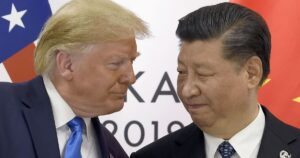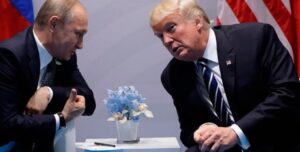
Chinese President Xi Jinping will not attend next week’s Group of 20 summit, dealing a blow to South Africa, which is already facing a boycott by US President Donald Trump, Bloomberg reports.
China’s Foreign Ministry announced on Thursday that Premier Li Keqiang will represent the country at the leaders’ summit, which begins in Johannesburg on November 22. The statement did not explain why Xi, who attended the event last year, will be absent this time.
Xi’s decision means that the summit, created to address geopolitical and economic issues and usually attended by heads of state, will not be attended by the leaders of the world’s two largest economies and another member country, Russia. Last week, Trump said that no American officials would attend the summit after he attacked South Africa with false claims of genocide against white Afrikaners. Russian President Vladimir Putin’s trip remains limited due to an arrest warrant issued by the International Criminal Court,” the statement said.
Other G-20 leaders, including Javier Milei of Argentina and Claudia Sheinbaum of Mexico, will also not travel to South Africa. However, several European leaders, as well as Brazilian President Luiz Inacio Lula da Silva and his Turkish counterpart Recep Tayyip Erdogan, plan to be there.
Lin Jian, spokesperson for China’s Foreign Ministry, said at a regular briefing on Thursday that the meeting in Johannesburg “has important historical significance” as it is the first G20 summit on the African continent, and expressed support for South Africa as the host country.
Li, China’s second-highest-ranking official, has represented Xi at other major international events in recent years. He stood in for the president at the G20 summit in India in 2023 and at the BRICS leaders’ meeting in Brazil in July.
South African officials say in private comments that the absence of the US may make it easier to reach agreement on the declaration, which they believe will be an indicator of the success of the country’s G20 presidency before handing over to Washington in December.

According to Serbian Economist, the Serbian parliament has passed a special law that accelerates preparations for the development of the site of the former Yugoslav National Army General Staff Headquarters in central Belgrade, which was damaged by NATO strikes in 1999. The developer is Affinity Global Development, an investment company founded by US President Donald Trump’s son-in-law Jared Kushner.
The project, worth about $500 million, involves the construction of a hotel, apartments, offices, and retail space, as well as a memorial space for the victims of the bombing.
A 99-year lease agreement with the Serbian government was signed in May 2024. In November 2024, the site was stripped of its protected cultural heritage status, paving the way for the project to go ahead. The adopted lex specialis simplifies and speeds up the issuance of permits and other administrative procedures, the authorities noted.
The opposition and relevant organizations criticize the decision, citing the cultural value of the complex and legal risks. Europa Nostra has included the General Staff Headquarters in its list of the seven most vulnerable European heritage sites of 2025. Radio Liberty notes that the law was passed with the votes of the ruling party, despite protests and an investigation into possible falsification of the document used to remove the protective status.
Affinity Global Development’s public statements and official communications do not mention the hotel brand, number of rooms, number of floors, room area, parking, or exact completion date. International agencies limit themselves to describing the functional mix without specifications. When official materials on the TEP and branding appear, the editorial staff of Serbian Economist will clarify the data.
The government is promoting the project as an investment and revitalization of Belgrade’s central location. Critics believe that the demolition and new construction will damage the modernist legacy of architect Nikola Dobrovic and the public memory of the events of 1999.
https://t.me/relocationrs/1705

34-year-old New York State Assemblyman Zohran Mamdani has won the New York City mayoral election, becoming the first Muslim to lead the city and the youngest mayor in more than a century. The victory has been confirmed by leading media outlets and agencies; His opponents were independent candidate Andrew Cuomo and Republican Curtis Slyva.
In his first speech after the results were announced, Mamdani said he would make New York a city for immigrants and vulnerable groups, naming affordable housing, transport and raising the minimum wage as his priorities.
He also publicly addressed Donald Trump. Donald Trump had previously called for a vote against Mamdani, supporting Cuomo, and threatened to limit federal funding for New York in the event of a victory for the democratic socialist; after the results were announced, he sharply criticised the mayor on social media.
Political analysts note that the victory of the left-wing candidate in the largest city in the United States and the response of the Republicans will indicate a further intensification of the confrontation between the two main parties at the federal and municipal levels in the run-up to the next electoral cycle.

U.S. President Donald Trump said on Saturday he does not plan to meet with Russian President Vladimir Putin until he thinks a deal is in place to secure peace between Russia and Ukraine.
“You have to know that we’re going to make a deal, I’m not going to be wasting my time,” Trump told reporters in Doha.

US President Donald Trump will visit Japan from October 27 to 29 and hold talks with new Prime Minister Sanae Takaichi, Japanese Cabinet Secretary Minoru Kihara said on Wednesday.
“President Trump’s visit will provide an extremely important opportunity to further strengthen the US-Japan alliance,” Kihara said, according to Kyodo.
He expressed hope that Trump’s trip would establish a personal relationship of trust between him and Prime Minister Takaichi and ensure the joint implementation of the concept of a “free and open Indo-Pacific region.”
According to Kyodo sources, Takaichi plans to discuss with Trump a joint response by Japan and the US to the growth of China’s military presence in the East China Sea and South China Sea, as well as North Korea’s missile and nuclear programs. Other topics will include US-Japan trade, the investment agreement signed last July, and Japan’s defense spending.
Trump is expected to meet with Emperor Naruhito of Japan on Monday, with Takaichi on Tuesday, and to visit the US naval base in Yokosuka.
Trump last visited Japan in 2019. This time, before traveling to Tokyo, Trump is expected to attend the ASEAN summit in Malaysia and then head to the APEC summit in South Korea, where he may meet with Chinese President Xi Jinping.
In turn, Japan’s new Foreign Minister Toshimitsu Motegi said he would coordinate with Washington on the implementation of the US-Japan trade agreement, under which goods from Japan are subject to a 15% tariff.
The Japanese parliament elected Takaichi, the head of the ruling Liberal Democratic Party, as the country’s prime minister the day before.
According to Kyodo, 64-year-old Takaichi is known for her “hardline views on security.” The former interior minister advocates, in particular, revising Article 9 of the 1947 Japanese constitution, which renounces militarism.
Takai is considered a supporter of far-right and nationalist views and is a member of Japan’s largest conservative and nationalist non-governmental organization and lobbying group, Nippon Kaigi. She is vice-chair of the parliamentary conference on the restoration of Shinto shrines and the promotion of moral education. She has repeatedly visited the Yasukuni Shinto shrine, a symbol of Japanese militarism: visits by high-ranking Japanese officials to the Yasukuni shrine traditionally provoke a sharp reaction in Beijing, Seoul, and Pyongyang and are seen as an insult to countries that suffered from Japanese occupation. She has also been critical of China’s economic policies and has advocated for reducing economic dependence on China.

Hungarian Prime Minister Viktor Orbán has said he is ready to host a meeting between US President Donald Trump and Vladimir Putin in Budapest, Hungary.
“The planned meeting between the US and Russian presidents is great news for peace-loving people around the world. We are ready!” Orbán wrote on social media on Thursday.
As reported, Trump spoke with Vladimir Putin on Thursday, calling it a very productive conversation, and announced the planned meetings—a personal meeting in Budapest and a meeting between advisers beforehand. He also said that during a planned meeting on Friday with Ukrainian President Volodymyr Zelensky in the Oval Office, the parties will discuss this conversation with Putin “and much more.”
At the same time, Trump said that during the conversation with Putin, he devoted a lot of time to discussing “trade between Russia and the US after the end of the war with Ukraine.”